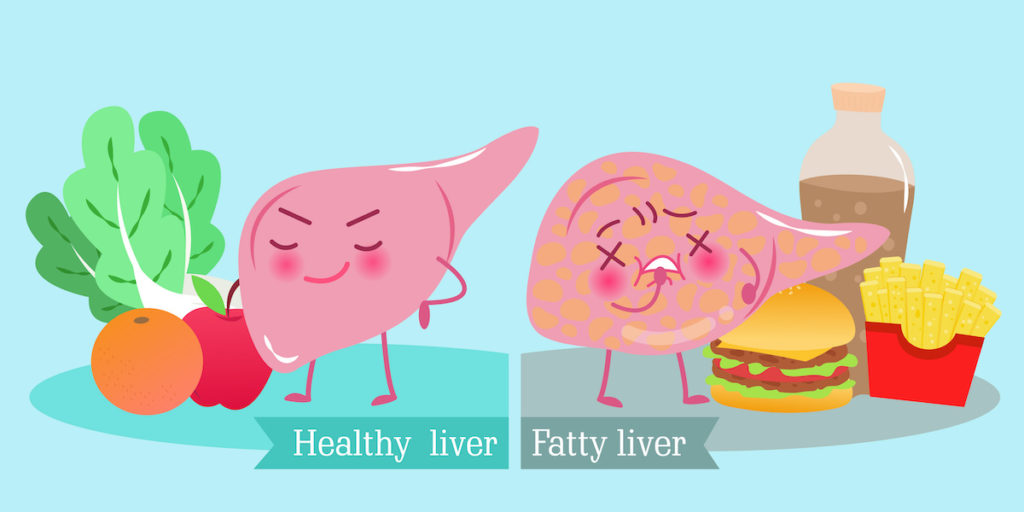For all you French buffs reading this, nope, fatty liver is not foie gras, although it translates directly as such! Fatty liver is also known as hepatic steatosis. Although it is normal to have a certain amount of fat attached to the liver, too much of it can lead to liver scarring and, ultimately, failure. When it develops in a person with a drinking problem, then it is called Alcoholic Fatty Liver Disease (AFLD). However, most of the times it develops in people who don’t have this problem and is then known as Non-Alcoholic Fatty Liver Disease (NAFLD), a condition that afflicts 25 to 30% of Americans and Europeans, according to the World Journal of Gastroenterology.
Risk Factors
There is heightened risk for people who are…
- Obese
- Insulin resistant
- Pregnant: Known as AFLP, it is a rare, yet critical disease whose cause is yet unknown.
…have…
- Type 2 diabetes
- Polycystic ovary syndrome
- A history of infectious diseases, like Hep-C
- High cholesterol and triglycerides
- High blood sugar
- A metabolic syndrome
- Undergone rapid weight loss
…or take…
- Certain medications, including methotrexate (Trexall), tamoxifen (Nolvadex), amiodorone (Pacerone), and valproic acid (Depakote)
Symptoms
Symptoms of simple fatty liver can go from all-around unnoticeable to a feeling of lack of energy. However, the next stage would be steatohepatitis, which is when there is already liver inflammation and may lead to discomfort or pain in the upper right of your abdomen. This is where the liver, the second largest organ in the human body, is located. The next step up in the stages of fatty liver would be fibrosis, which is when inflammation is severe and causes scarring. When this scarring gets out of control, it is called cirrhosis. This is a life-threatening condition that has a larger number of telling symptoms, including:
- loss of weight and appetite
- weakness or fatigue
- nosebleeds
- itchy skin
- yellow skin and eyes
- web-like clusters of blood vessels under your skin
- abdominal swelling and pain
- leg swelling
- breast enlargement in men
- confusion
Diagnostics
Diagnosing fatty liver includes a number of medical initiatives, starting with presenting a medical history to the physician, followed by one or several of these diagnostic checks: a physical exam, blood tests, imaging studies, and finally a liver biopsy, considered the most thorough method to test the occurrence and severity of the disease.
Treatment
No approved medication is out there, so lifestyle changes are a must.
- Severely limit or avoid alcohol altogether.
- Cut calories and lose weight.
- Introduce dietary changes. Severely lower saturated and trans fats, as well as refined carbs.
- Control blood sugar, triglycerides, and cholesterol.
- Exercise for at least 30 minutes daily or most days.
- Ancillary medication and surgery may be necessary, ultimately.
Sources:
https://www.healthline.com/health/fatty-liver


